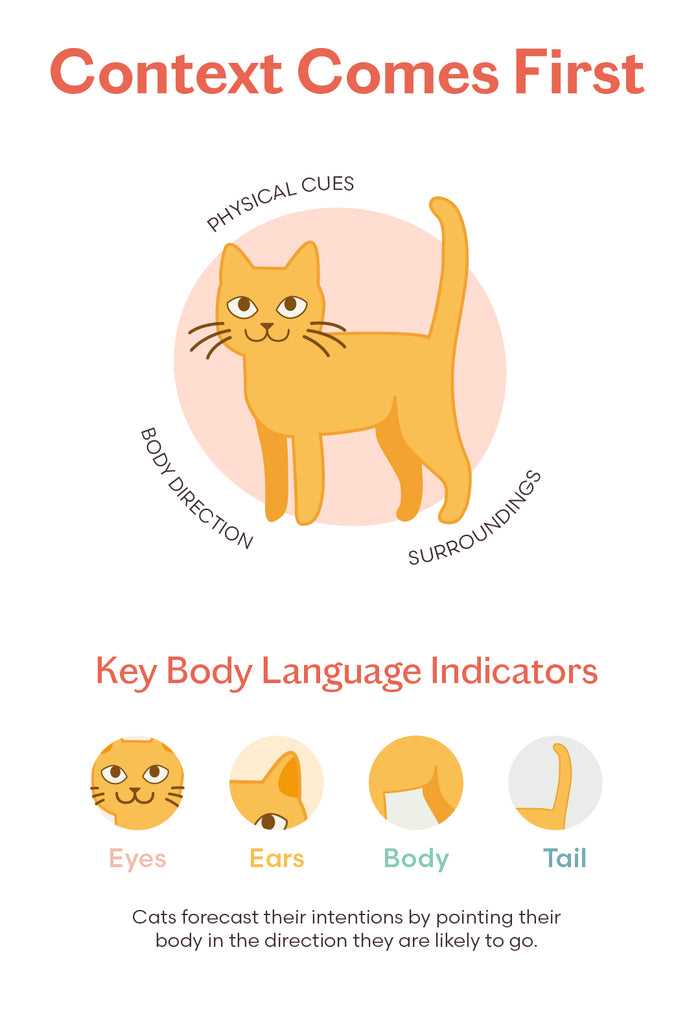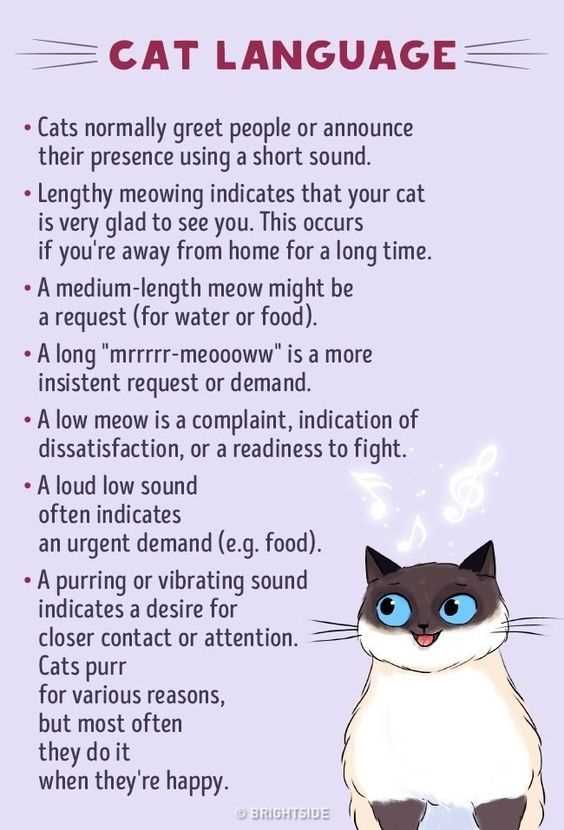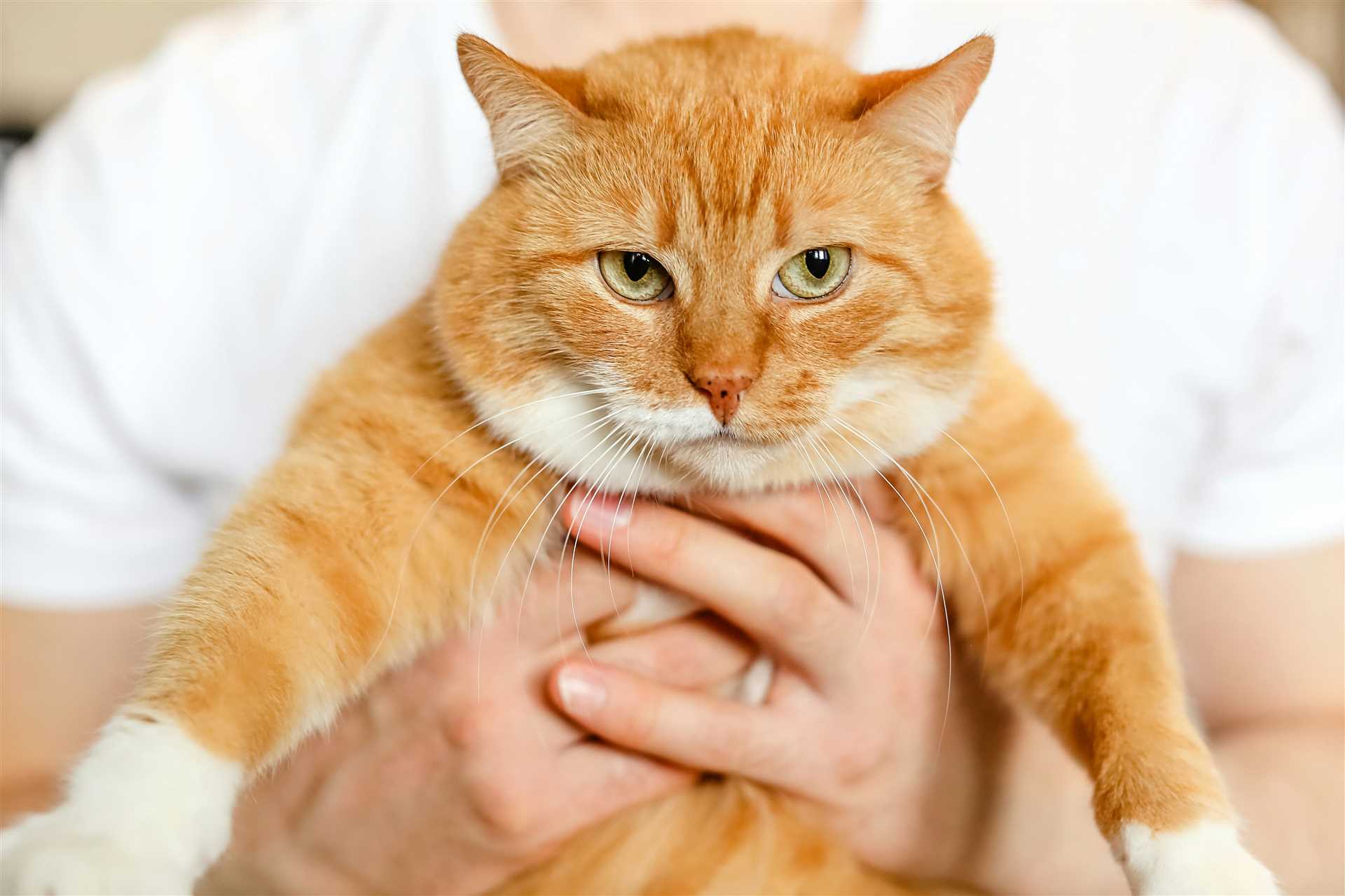As an 8-year-old Scottish Fold, I’ve had my fair share of interactions with my humans. One thing I’ve noticed is that they often misinterpret our behaviors and sounds. It’s crucial to pay attention to the subtle cues we display. For instance, when I purr, it’s not just a sign of contentment; it can also indicate that I need some reassurance.
Research indicates that many furry companions can pick up on the emotional states of their owners. When my human smiles or frowns, I can feel the shift in the atmosphere. Tail position, ear orientation, and even the type of meow I use can convey a lot. By observing these signals, my companions can better understand my needs and feelings.
Engaging in regular playtime can bridge the communication gap. When we chase toys together or engage in a good game of hide-and-seek, it strengthens our bond. This shared experience allows us to express ourselves more freely, making it easier for my humans to grasp what I’m trying to convey.
Ultimately, the key to better interactions lies in mutual observation and patience. Understanding each other takes time, but the effort is worth it for both sides. So, let’s keep the lines of communication open and enjoy our time together!
Understanding Our Humans
Humans communicate with us through a variety of sounds and body language. When they call our names or use specific phrases, they often expect a reaction. Responding to their tone is key; excited voices indicate playtime, while softer tones may signal comfort. Observing their body language can also provide insight; for instance, if they crouch down with open arms, they likely want to engage with us.
Recognizing Emotions

Being attuned to human emotions enhances our bond. I can sense when my human is happy or upset by their energy levels and movements. Relaxed postures and gentle strokes mean they are at ease, while tense movements may indicate stress. Paying attention to these cues helps strengthen our connection.
Learning Through Repetition

Repetition plays a significant role in our interactions. When my human consistently uses a word or phrase before feeding me, I start to associate it with that action. Over time, I can even learn commands, especially if treats are involved. This method not only aids in communication but also fosters a mutual understanding between us.
While exploring what we can and cannot eat, it’s wise to check resources. For example, if you’re curious about what we can snack on, you might want to read about can we eat summer sausage.
How Do Felines Interpret Human Body Language?
Observing your movements is a key part of how I, as a feline, gauge your feelings and intentions. Slow, deliberate gestures often signal calmness. When you approach with open hands, it indicates a friendly demeanor, making me feel secure.
Posture and Proximity
Standing tall with arms crossed may communicate defensiveness or authority. I prefer when you bend down or sit, as it feels less intimidating and more inviting. The distance you maintain also matters; staying too far away might make me cautious, while closing the gap can foster trust.
Facial Expressions

Your facial cues provide insight into your mood. A smile or relaxed features convey comfort, while furrowed brows suggest tension. Eye contact plays a significant role; soft blinking from you is perceived as a sign of affection, encouraging me to reciprocate the gesture.
Recognizing these signals enhances our bond, allowing for a deeper connection and mutual understanding. I appreciate your efforts to communicate in ways that resonate with me.
What Sounds Do Felines Respond to in Human Communication?
I pay close attention to the distinct sounds that come from my human. The tone and pitch significantly influence how I react. High-pitched voices often catch my ear, especially when my human is excited or playful. When those lilting notes ring out, it usually means something fun is about to happen–like playtime or treats!
Soft, soothing tones are also effective. When my human speaks gently, it conveys comfort and warmth. I lean closer, enjoying the calm energy. On the flip side, loud or harsh noises tend to make me retreat. A raised voice or sudden sounds can startle me, prompting a quick dash to my safe spot.
Specific words or phrases have become familiar, too. My name is a big one; I perk up every time I hear it. Commands like “come here” or “no” also resonate. I’ve learned that certain sounds are associated with actions, like the crinkle of a treat bag or the snap of a toy. Those auditory cues always get my attention!
Interestingly, the rhythm of speech matters as well. A sing-song quality can engage me more than monotone chatting. I enjoy the musicality of my human’s voice, which often makes me feel more relaxed and connected.
Ultimately, it’s all about the interplay of sounds, tones, and rhythms. Each interaction shapes how I perceive communication, making me more attuned to the nuances of my human’s vocalizations.
Can Training Improve Felines’ Understanding of Commands?
Yes, training can enhance the ability of my kind to recognize and respond to various cues. Positive reinforcement techniques work wonders. Each session should be short, around 5 to 10 minutes, to keep attention focused.
- Use treats that are favored to motivate and reward.
- Start with simple commands like “sit” or “high five.” These are easy to grasp.
- Consistency is key; use the same words and gestures every time.
- Patience is essential. Some may take longer to grasp the meanings.
Engagement during training can lead to better communication. I find joy in interactive play, which can be incorporated into learning. When rewarded, not only do we learn commands, but we also form a stronger bond.
For those wondering about communication styles, it’s interesting to note that some may enjoy the sound of humans mimicking their meows. You can explore more about this in the article on do cats like when you meow at them.
In summary, training fosters a deeper connection and improves recognition of commands, making interactions more meaningful.
As an 8-year-old Scottish Fold, I’ve had my fair share of interactions with my humans. One thing I’ve noticed is that they often misinterpret our behaviors and sounds. It’s crucial to pay attention to the subtle cues we display. For instance, when I purr, it’s not just a sign of contentment; it can also indicate that I need some reassurance.
Research indicates that many furry companions can pick up on the emotional states of their owners. When my human smiles or frowns, I can feel the shift in the atmosphere. Tail position, ear orientation, and even the type of meow I use can convey a lot. By observing these signals, my companions can better understand my needs and feelings.
Engaging in regular playtime can bridge the communication gap. When we chase toys together or engage in a good game of hide-and-seek, it strengthens our bond. This shared experience allows us to express ourselves more freely, making it easier for my humans to grasp what I’m trying to convey.
Ultimately, the key to better interactions lies in mutual observation and patience. Understanding each other takes time, but the effort is worth it for both sides. So, let’s keep the lines of communication open and enjoy our time together!
Understanding Our Humans
Humans communicate with us through a variety of sounds and body language. When they call our names or use specific phrases, they often expect a reaction. Responding to their tone is key; excited voices indicate playtime, while softer tones may signal comfort. Observing their body language can also provide insight; for instance, if they crouch down with open arms, they likely want to engage with us.
Recognizing Emotions

Being attuned to human emotions enhances our bond. I can sense when my human is happy or upset by their energy levels and movements. Relaxed postures and gentle strokes mean they are at ease, while tense movements may indicate stress. Paying attention to these cues helps strengthen our connection.
Learning Through Repetition

Repetition plays a significant role in our interactions. When my human consistently uses a word or phrase before feeding me, I start to associate it with that action. Over time, I can even learn commands, especially if treats are involved. This method not only aids in communication but also fosters a mutual understanding between us.
While exploring what we can and cannot eat, it’s wise to check resources. For example, if you’re curious about what we can snack on, you might want to read about can we eat summer sausage.
How Do Felines Interpret Human Body Language?
Observing your movements is a key part of how I, as a feline, gauge your feelings and intentions. Slow, deliberate gestures often signal calmness. When you approach with open hands, it indicates a friendly demeanor, making me feel secure.
Posture and Proximity
Standing tall with arms crossed may communicate defensiveness or authority. I prefer when you bend down or sit, as it feels less intimidating and more inviting. The distance you maintain also matters; staying too far away might make me cautious, while closing the gap can foster trust.
Facial Expressions

Your facial cues provide insight into your mood. A smile or relaxed features convey comfort, while furrowed brows suggest tension. Eye contact plays a significant role; soft blinking from you is perceived as a sign of affection, encouraging me to reciprocate the gesture.
Recognizing these signals enhances our bond, allowing for a deeper connection and mutual understanding. I appreciate your efforts to communicate in ways that resonate with me.
What Sounds Do Felines Respond to in Human Communication?
I pay close attention to the distinct sounds that come from my human. The tone and pitch significantly influence how I react. High-pitched voices often catch my ear, especially when my human is excited or playful. When those lilting notes ring out, it usually means something fun is about to happen–like playtime or treats!
Soft, soothing tones are also effective. When my human speaks gently, it conveys comfort and warmth. I lean closer, enjoying the calm energy. On the flip side, loud or harsh noises tend to make me retreat. A raised voice or sudden sounds can startle me, prompting a quick dash to my safe spot.
Specific words or phrases have become familiar, too. My name is a big one; I perk up every time I hear it. Commands like “come here” or “no” also resonate. I’ve learned that certain sounds are associated with actions, like the crinkle of a treat bag or the snap of a toy. Those auditory cues always get my attention!
Interestingly, the rhythm of speech matters as well. A sing-song quality can engage me more than monotone chatting. I enjoy the musicality of my human’s voice, which often makes me feel more relaxed and connected.
Ultimately, it’s all about the interplay of sounds, tones, and rhythms. Each interaction shapes how I perceive communication, making me more attuned to the nuances of my human’s vocalizations.
Can Training Improve Felines’ Understanding of Commands?
Yes, training can enhance the ability of my kind to recognize and respond to various cues. Positive reinforcement techniques work wonders. Each session should be short, around 5 to 10 minutes, to keep attention focused.
- Use treats that are favored to motivate and reward.
- Start with simple commands like “sit” or “high five.” These are easy to grasp.
- Consistency is key; use the same words and gestures every time.
- Patience is essential. Some may take longer to grasp the meanings.
Engagement during training can lead to better communication. I find joy in interactive play, which can be incorporated into learning. When rewarded, not only do we learn commands, but we also form a stronger bond.
For those wondering about communication styles, it’s interesting to note that some may enjoy the sound of humans mimicking their meows. You can explore more about this in the article on do cats like when you meow at them.
In summary, training fosters a deeper connection and improves recognition of commands, making interactions more meaningful.
As an 8-year-old Scottish Fold, I’ve had my fair share of interactions with my humans. One thing I’ve noticed is that they often misinterpret our behaviors and sounds. It’s crucial to pay attention to the subtle cues we display. For instance, when I purr, it’s not just a sign of contentment; it can also indicate that I need some reassurance.
Research indicates that many furry companions can pick up on the emotional states of their owners. When my human smiles or frowns, I can feel the shift in the atmosphere. Tail position, ear orientation, and even the type of meow I use can convey a lot. By observing these signals, my companions can better understand my needs and feelings.
Engaging in regular playtime can bridge the communication gap. When we chase toys together or engage in a good game of hide-and-seek, it strengthens our bond. This shared experience allows us to express ourselves more freely, making it easier for my humans to grasp what I’m trying to convey.
Ultimately, the key to better interactions lies in mutual observation and patience. Understanding each other takes time, but the effort is worth it for both sides. So, let’s keep the lines of communication open and enjoy our time together!
Understanding Our Humans
Humans communicate with us through a variety of sounds and body language. When they call our names or use specific phrases, they often expect a reaction. Responding to their tone is key; excited voices indicate playtime, while softer tones may signal comfort. Observing their body language can also provide insight; for instance, if they crouch down with open arms, they likely want to engage with us.
Recognizing Emotions

Being attuned to human emotions enhances our bond. I can sense when my human is happy or upset by their energy levels and movements. Relaxed postures and gentle strokes mean they are at ease, while tense movements may indicate stress. Paying attention to these cues helps strengthen our connection.
Learning Through Repetition

Repetition plays a significant role in our interactions. When my human consistently uses a word or phrase before feeding me, I start to associate it with that action. Over time, I can even learn commands, especially if treats are involved. This method not only aids in communication but also fosters a mutual understanding between us.
While exploring what we can and cannot eat, it’s wise to check resources. For example, if you’re curious about what we can snack on, you might want to read about can we eat summer sausage.
How Do Felines Interpret Human Body Language?
Observing your movements is a key part of how I, as a feline, gauge your feelings and intentions. Slow, deliberate gestures often signal calmness. When you approach with open hands, it indicates a friendly demeanor, making me feel secure.
Posture and Proximity
Standing tall with arms crossed may communicate defensiveness or authority. I prefer when you bend down or sit, as it feels less intimidating and more inviting. The distance you maintain also matters; staying too far away might make me cautious, while closing the gap can foster trust.
Facial Expressions

Your facial cues provide insight into your mood. A smile or relaxed features convey comfort, while furrowed brows suggest tension. Eye contact plays a significant role; soft blinking from you is perceived as a sign of affection, encouraging me to reciprocate the gesture.
Recognizing these signals enhances our bond, allowing for a deeper connection and mutual understanding. I appreciate your efforts to communicate in ways that resonate with me.
What Sounds Do Felines Respond to in Human Communication?
I pay close attention to the distinct sounds that come from my human. The tone and pitch significantly influence how I react. High-pitched voices often catch my ear, especially when my human is excited or playful. When those lilting notes ring out, it usually means something fun is about to happen–like playtime or treats!
Soft, soothing tones are also effective. When my human speaks gently, it conveys comfort and warmth. I lean closer, enjoying the calm energy. On the flip side, loud or harsh noises tend to make me retreat. A raised voice or sudden sounds can startle me, prompting a quick dash to my safe spot.
Specific words or phrases have become familiar, too. My name is a big one; I perk up every time I hear it. Commands like “come here” or “no” also resonate. I’ve learned that certain sounds are associated with actions, like the crinkle of a treat bag or the snap of a toy. Those auditory cues always get my attention!
Interestingly, the rhythm of speech matters as well. A sing-song quality can engage me more than monotone chatting. I enjoy the musicality of my human’s voice, which often makes me feel more relaxed and connected.
Ultimately, it’s all about the interplay of sounds, tones, and rhythms. Each interaction shapes how I perceive communication, making me more attuned to the nuances of my human’s vocalizations.
Can Training Improve Felines’ Understanding of Commands?
Yes, training can enhance the ability of my kind to recognize and respond to various cues. Positive reinforcement techniques work wonders. Each session should be short, around 5 to 10 minutes, to keep attention focused.
- Use treats that are favored to motivate and reward.
- Start with simple commands like “sit” or “high five.” These are easy to grasp.
- Consistency is key; use the same words and gestures every time.
- Patience is essential. Some may take longer to grasp the meanings.
Engagement during training can lead to better communication. I find joy in interactive play, which can be incorporated into learning. When rewarded, not only do we learn commands, but we also form a stronger bond.
For those wondering about communication styles, it’s interesting to note that some may enjoy the sound of humans mimicking their meows. You can explore more about this in the article on do cats like when you meow at them.
In summary, training fosters a deeper connection and improves recognition of commands, making interactions more meaningful.







